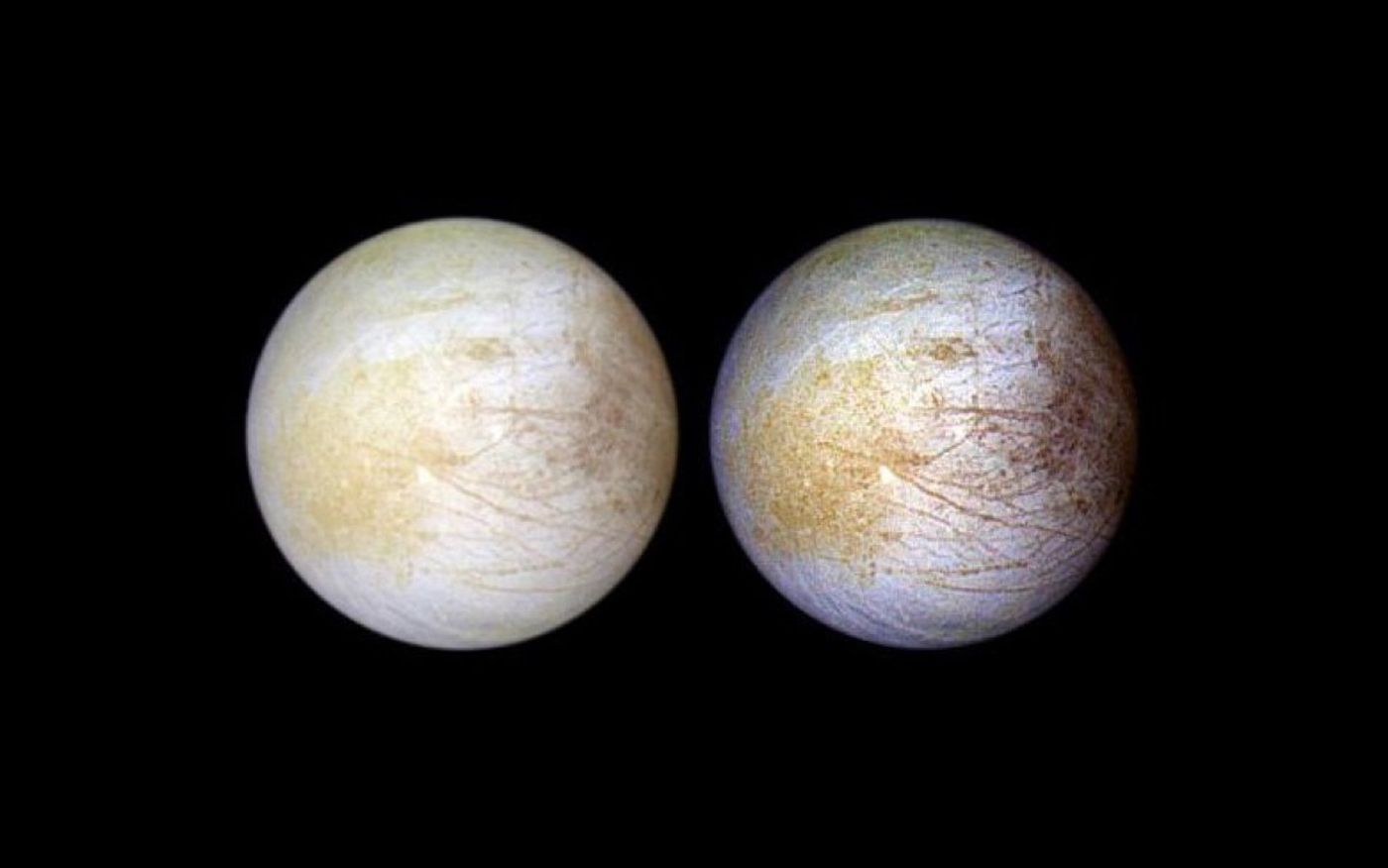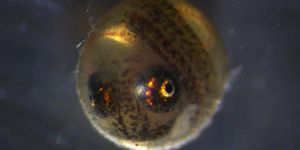New Analysis Reveals That Europa's Oceans Likely Contain Table Salt
Among the bevy of natural satellites that orbit the solar system’s largest-known planet, Europa is perhaps one of the most intriguing. Several flyby missions, starting with the Voyager 1 probe in 1979, have suggested the presence of a briny sub-surface ocean. With that in mind, it should come as no surprise to anyone that Europa tends to be a target for scientific observations.
Image Credit: NASA/JPL/University of Arizona
While astronomers have long thought that Europa sported salty sub-surface oceans, it wasn’t until recently that astronomers confirmed the existence of sodium chloride (table salt) there. The latest findings, which have been published in the journal Science Advances, suggest that Europa’s ocean content is more similar to Earth’s than initially thought; and this has implications for the world’s habitability, among other things.
The flyby missions over the years have built a compelling argument for this long-unconfirmed idea, but it wasn’t until researchers at both Caltech and NASA’s Jet Propulsion Laboratory did some investigating of their own that all the puzzle pieces finally started coming together. Their visible light spectral analysis offered the most reliable indication of sodium chloride on Europa to date.
Related: Is Europa our best shot at finding life elsewhere in the solar system?
Scientists have known for quite some time that Europa exhibits salts, but identifying the type of salt is a more challenging task. The spectral analysis revealed shades of yellow in distinct regions, and while it was a bit of a head-scratcher at first, the researchers kept digging and finally made their discovery.
"We thought that we might be seeing sodium chlorides, but they are essentially featureless in an infrared spectrum," explained Mike Brown, a co-author of the paper. "People have traditionally assumed that all of the interesting spectroscopy is in the infrared on planetary surfaces because that's where most of the molecules that scientists are looking for have their fundamental features."
"No one has taken visible wavelength spectra of Europa before that had this sort of spatial and spectral resolution. The Galileo spacecraft didn't have a visible spectrometer. It just had a near-infrared spectrometer," added Samantha Trumbo, the paper’s lead author.
Related: A reexamination of Galileo's spacecraft data reveals how plumes erupt from Europa
The researchers admit that the source of the sodium chloride is still very much a mystery, and while it’s certainly possible that it originated from the moon’s sub-surface ocean, this is not a guarantee. Regardless, the existence of table salt on one of the solar system’s most captivating moons is no laughing matter, and perhaps the discovery deserves some follow-up attention.
It should be interesting to see what planetary scientists find as they continue studying Europa from a distance, but perhaps one day we’ll be able to explore the moon up close and personal with a dedicated planetary science mission to answer many of the remaining questions regarding this world and its potential for habitability.
Source: Caltech, Science Advances









